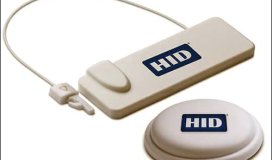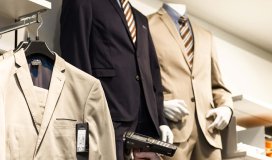Trade association Outdoor Advertising Association of America (OAAA) recently used a dual-frequency, Near Field Communication (NFC) and ultrahigh-frequency (UHF) radio frequency identification solution to provide attendees with personalized greetings as they entered the organization's conference, held in New Orleans on May 15-17, as well as access to show-based content. The technology not only offered a "coolness" factor for guests, but also provided the OAAA with analytic information regarding traffic flows through its conference, so that it can better strategize the layout of show floors in the future.
Founded in 1891, the OAAA is the lead trade association that represents the out-of-home (OOH) advertising market. OOH advertising consists of the marketing provided to consumers in public places, such as billboards or displays in transportation or other gathering areas. As technology enables digital OOH advertising, the association has been interested in demonstrating new ways in which technology can provide advertising beyond billboards or signage.
The OAAA began working with event technology company ACCESS Event Solutions and digital experience engine firm Blue Bite to deploy a system at its annual trade show that would illustrate ways in which technology can enhance advertising. Blue Bite, in fact, is a member of the association, says Mikhail Damiani, Blue Bite's CEO. "We wanted to create a surprise and delight experience for attendees," he states. And while the OAAA wanted to include features that enable attendees to easily access data on their smartphones, it also wanted something that required no effort at all on the part of attendees.
The technology companies found that UHF and NFC RFID together provided the best solution, since neither technology required batteries in the badges. What's more, each could provide precise interrogation—at the front entrance, for instance.
The system, designed earlier this year, consists of ACCESS Event Solutions' smart badges with two embedded passive tags: a Smartrac Circus NFC tag with an Semiconductors NTAG213 chip, and a Smartrac DogBone UHF RFID tag with a built-in Impinj Monza R6 chip for a longer read range to interact with onsite media screens. Users could deploy the NFC tag in the badge to interact with conference-based content using their own smart mobile devices. For those without Android phones, the badge also came with a printed QR code.
Last year, Lunds & Byerlys began working with ParTech on an automated solution to make the process of tracking the temperatures of its fresh food more automated. ParTech's software-as-a-service (SaaS) solution consists of SureCheck Advantage (SCA) units with temperature sensors and built-in readers developed in-house. The system also comes with two types of high-frequency (HF) 13.56 MHz RFID tags—one battery-powered device with built-in temperature sensors from Phase IV Engineering, and another passive tag with simply a unique ID number.
The temperature sensor tags can automatically capture temperatures at programmable intervals down to every five minutes, once installed within coolers and freezers. That data can then be retrieved using a handheld SCA device that reads each tag's ID and the related sensor data. The SCA serves as an all-in-one handheld device, providing IR-based temperature sensors, tethered temperature probes, a camera and an RFID reader, with a built-in Android operating system.
To read temperature tags, the SCA is placed within a few centimeters of them, in order to capture the reading and the tag IDs. Non-temperature RFID responders (tags) can also be used as proof of location. In some cases, foods must be probed for internal temperature. To conduct such safety checks, a user can log into the SCA and provide his or her own identity, as well as any other information, such as where the measurements are being taken. That user ID is then saved in the cloud, along with a timestamp.
The employee then holds the SCA unit within read range of a passive HF SureCheck tag that is installed in the cooler. The tag ID is forwarded to the software via a Wi-Fi connection, and the software then prompts the SCA to display a checklist for the user to capture specific probe-based temperatures. When he or she does so, those measurements are also sent to the cloud-based software automatically.
"One of the major benefits of using PAR's SureCheck Advantage system has been the ability to capture much of the required information and have it completely accessible within seconds," Gindorff says. "And it is easy to understand and consistent."
"The system uses a simple checklist approach for the user to carry out an inspection," Sammon states. "The checklists are defined based on our clients' HACCP program. Schedules can be set and a user simply works through the checklist."



